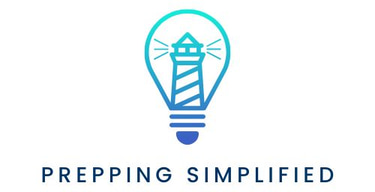WATER PURIFICATION:
Access to clean, drinkable water is one of the most critical components of survival during emergencies and long-term crises. Without it, dehydration and disease can set in quickly.
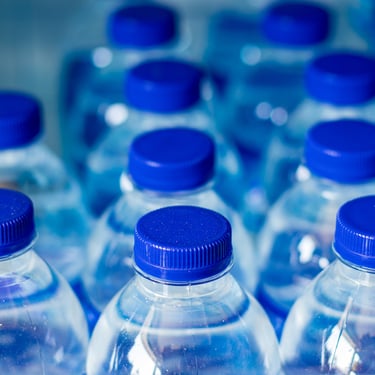
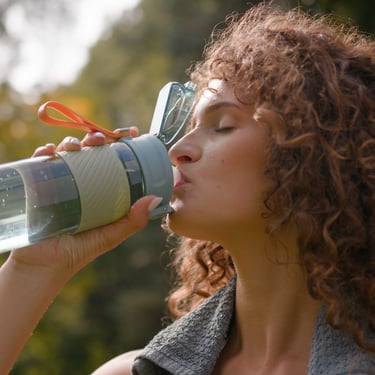
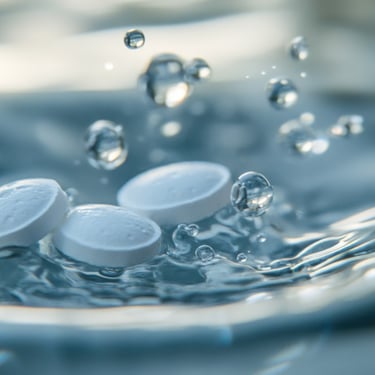
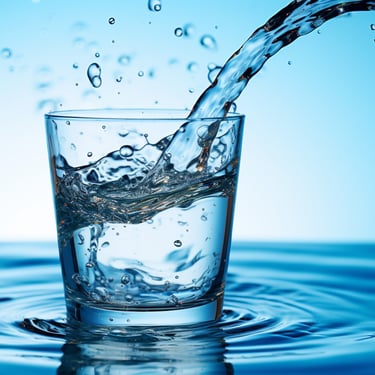
By mastering water purification and storage techniques, you can safeguard your family’s health and resilience when disaster strikes.
1. Stockpiling Bottled and Emergency Water
The easiest and most immediate way to ensure clean water is to stockpile bottled and emergency water supplies.
Best Water to Store:
Emergency water pouches
Tip: Aim to store at least one gallon of water per person per day for at least two weeks. For a family of four, that’s 56 gallons of water. Consider adding a few extra gallons for pets and cooking needs.
Real-Life Example: After Hurricane Harvey, families with large bottled water reserves avoided long waits for aid and contamination risks from floodwaters. Some families also used water bricks that could be easily transported during evacuations.
Do: Store water in cool, dark places, and regularly rotate supplies.
Top Pick: Emergency Water Supply Kit
Blue Can 50-Year Shelf Life Water – Perfect for long-term storage with a 50-year shelf life.
Recommended Book:
"The Prepper's Water Survival Guide" – A complete step-by-step manual on water collection, filtration, and storage.
2. Boiling Water – The Simplest Purification Method
Boiling is one of the oldest and most reliable ways to kill bacteria, viruses, and parasites in water. It doesn’t require special equipment, making it accessible to everyone.
Steps for Boiling Water:
Bring water to a rolling boil for at least one minute.
Let it cool before drinking.
Store in clean, covered containers.
Tip: Use a stainless steel pot and cover to speed up the boiling process and retain heat longer. If boiling large amounts of water, consider using a fire-safe kettle over an open flame during camping or off-grid situations.
Real-Life Scenario: After an earthquake in Nepal, many villagers relied on boiling water from local streams to avoid cholera outbreaks. Boiling saved countless lives and reduced the spread of waterborne illnesses.
Do: Always filter cloudy water through a cloth or coffee filter before boiling.
Don’t: Drink water straight from rivers or lakes without purification, even if it looks clean.
Top Pick: Portable Camping Stove
Camp Chef Explorer 2 Burner Stove – Ideal for boiling large quantities of water during power outages.
Recommended Book:
"Prepper’s Water Purification Survival Bible": How to Find, Harvest, Filter, Purify, and Store Water Off the Grid
3. Water Filtration Systems
Water filtration devices remove impurities and contaminants, providing clean drinking water in seconds. They come in various forms, including portable straws, pump filters, and large home filtration systems.
Best Water Filters:
Tip: Keep a personal filter in your emergency bag and a larger gravity-fed system at home. For added safety, store replacement filters to extend the lifespan of your system.
Real-Life Example: During the Flint water crisis, residents used portable filters to remove lead and other contaminants from their tap water. Filters became a critical tool for families who couldn’t access clean municipal water.
Do: Regularly clean and replace filters to ensure effectiveness.
Don’t: Assume all filters remove viruses—check for systems rated to remove both bacteria and viruses.
Top Pick: Gravity Water Filter
Big Berkey Gravity-Fed Water Filter – Highly effective at removing bacteria, chemicals, and heavy metals.
Add-on:
LifeStraw Personal Water Filter – Lightweight, affordable, and filters up to 1,000 gallons of water.
4. Water Purification Tablets and Drops
Purification tablets and drops are compact and lightweight solutions for treating water quickly in emergencies. They are easy to store and work well in conjunction with filtration systems.
Best Tablets and Drops:
Bleach (unscented, regular)
Tip: Keep purification tablets in every emergency kit, including your car and workplace. Tablets are also essential for international travel.
Real-Life Scenario: Hikers lost in the Grand Canyon survived by purifying water from streams using tablets until rescue teams arrived. The lightweight tablets saved space and weight in their packs.
Do: Follow the instructions carefully to avoid under or over-dosing.
Don’t: Use expired tablets or those stored in damp conditions.
Top Pick: Purification Tablets
Potable Aqua Water Purification Tablets – Trusted by military and emergency responders worldwide.
Recommended Book:
"Outdoor Life Ultimate Survival Manual" – A comprehensive guide including water purification techniques.
5. Solar Water Disinfection (SODIS)
SODIS uses solar energy to disinfect water in clear plastic bottles. This simple, low-cost method is effective in sunny climates.
Steps for SODIS:
Fill clear plastic bottles with water.
Leave bottles in direct sunlight for 6-8 hours.
Drink directly from the bottle after cooling.
Real-Life Scenario: Villages in Africa have used SODIS to reduce waterborne diseases, significantly lowering childhood diarrhea rates.
Top Pick: Clear Water Bottles
BPA-Free Solar Disinfection Bottles – Designed for emergency SODIS water purification.
6. Rainwater Harvesting Systems
Rainwater harvesting allows you to collect and store rain for drinking, cooking, and hygiene. It’s an effective long-term solution for water independence.
Tip: Install gutters and downspouts to direct rainwater into large barrels. Use first-flush diverters to remove contaminants before storing the water.
Real-Life Scenario: In Puerto Rico, many families relied on rainwater harvesting systems after Hurricane Maria left them without municipal water for months.
Top Pick: Rain Barrel Collection System
FCMP Outdoor Rain Catcher – Large capacity, durable, and easy to set up.
Mastering water purification is essential for preparedness. By employing a combination of stockpiling, filtration, and innovative techniques like SODIS and rain harvesting, you can ensure access to safe water during any crisis. Start small, build your knowledge, and prioritize your family’s hydration and health in your emergency planning.
Disclaimer:
This site contains affiliate links to Amazon. As an Amazon Associate, I may earn a commission from qualifying purchases. Your support helps keep the site running, with no extra charge to you.
The information provided on this website is for general informational purposes only. While we strive to ensure accuracy and reliability, the content is not intended as professional advice. Always consult with qualified professionals for specific needs or situations.
